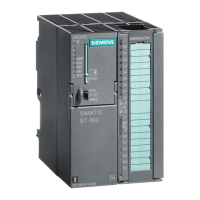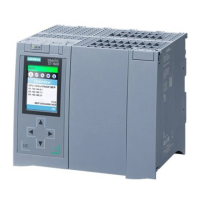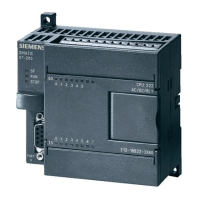7HVWLQJIXQFWLRQVDQG'LDJQRVWLFV
S7-300 Automation System, Hardware and Installation: CPU 312IFM - 318-2 DP
11-4 A5E00203919-01
2YHUYLHZ'LDJQRVWLFV
,QWURGXFWLRQ
System errors can occur especially in the &RPPLVVLRQLQJ phase. Tracking these
errors might be a time-consuming effort, since they can occur likewise on hardware
and on software side. Here, the multitude of testing functions ensures
commissioning without problems.
1RWH
Faults GXULQJRSHUDWLRQ are almost alwa
s caused b
hardware errors or dama
e.
7\SHVRI(UURU
Errors the S7 CPUs can recognize and to which you can react with the help of
organization blocks (OBs) can be split into the following two categories:
• Synchronous errors: Errors you can relate to a specific point in the user
program (e.g. error when accessing a peripheral module).
• Asynchronous errors: Errors you can QRW relate to a specific point in the user
program (e.g. cycle time exceeded, module error).
(UURU+DQGOLQJ
Programming with foresight and, above all, knowledge and proper handling of
diagnostic tools puts you into an advantageous position in error situations:
• You can reduce the effects of errors.
• It makes it easier for you to locate errors (e.g. by programming error OBs).
• You can limit downtimes.
'LDJQRVWLFVZLWK/('GLVSOD\
SIMATIC S7 hardware offers diagnostics with LEDs.
These LEDs are implemented in three colors:
• Green LEDs report regular operation (e.g. supply voltage is applied).
• Yellow LEDs indicate special operating states (e.g. "Force" is active).
• Red LEDs report errors (e.g. bus error)
A flashing LED also indicates a special event (e.g. memory reset).

